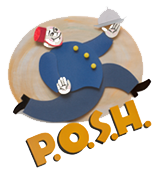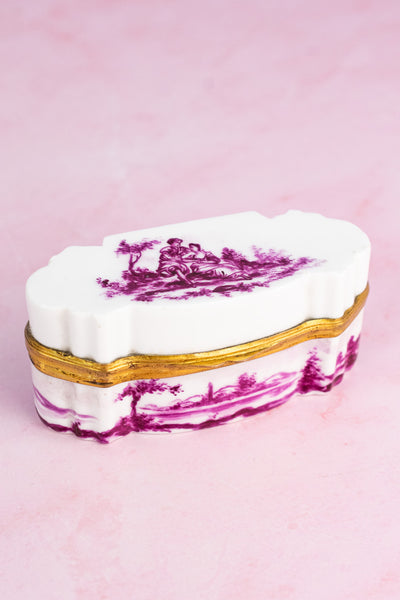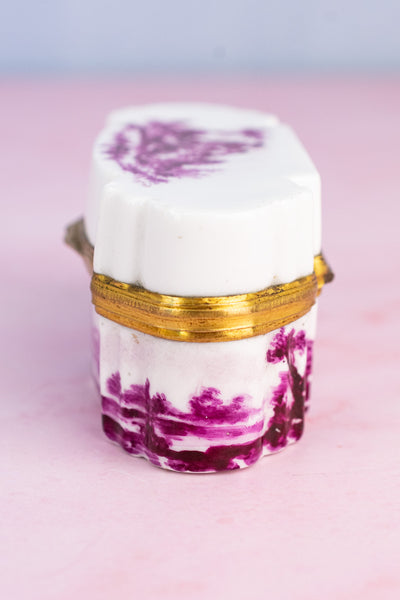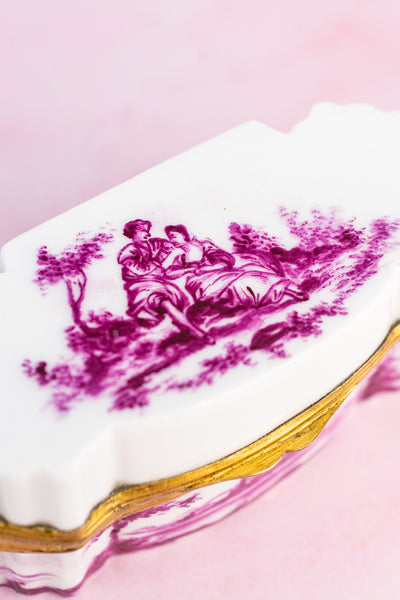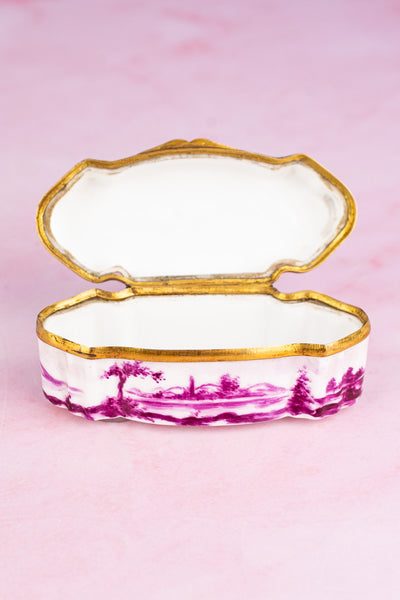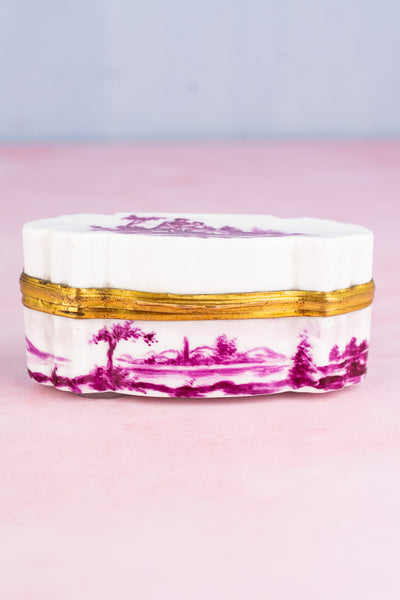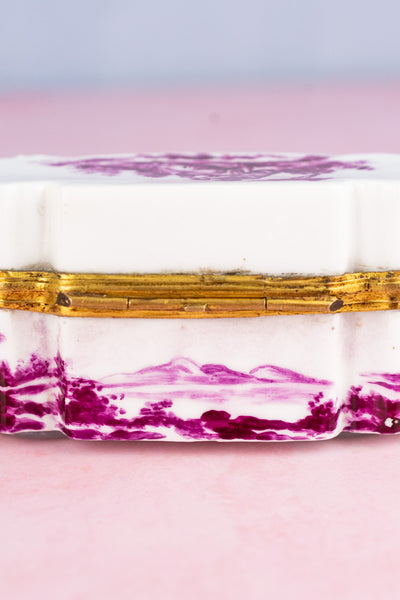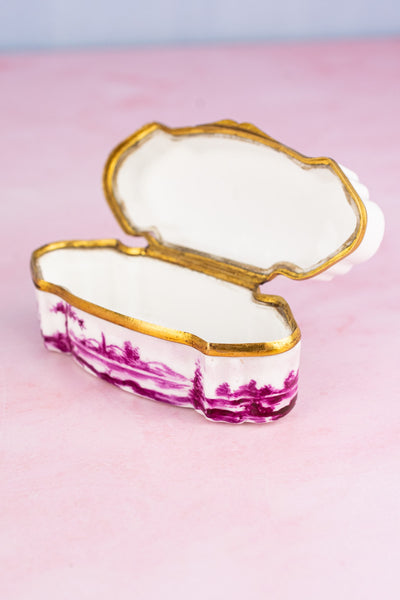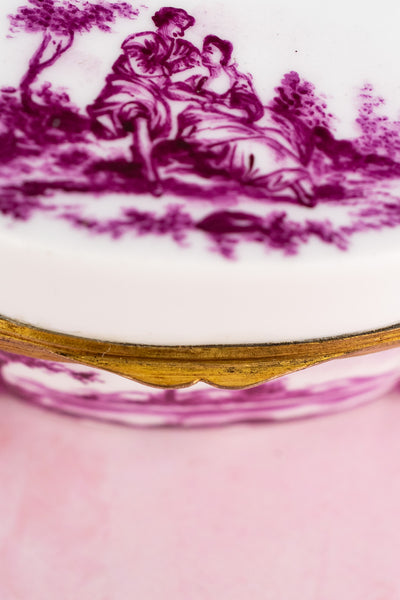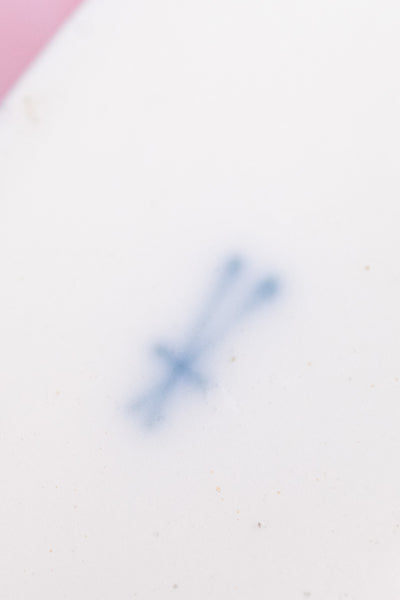Antique Meissen Porcelain Box
SOLD
An exquisite treasure to cherish, this Antique Meissen Porcelain Box was a lovely market find on a sunny afternoon. Produced in conjunction with the talented artisans at the Meissen porcelain manufactory of Germany, this elegant trinket box was created by Meissen for decoration by an independent porcelain painter.
Adorned with a lovely couple on the lavishly sculpted lid, the undulating perimeter of this enchanting box is covered with a lush landscape scene. Entirely painted by hand, the rich raspberry hue of the applied decoration looks as fresh today as the first day this magnificent box was undoubtedly given as a special gift. Rimmed in bright brass, the lid gently opens and closes on a fine hinge.
A gorgeous piece with timeless appeal, this rare box showcases Meissen's unrivaled artistic porcelain mastery, resulting in an antique heirloom that will continue to be treasured for generations. Well-sized for a piece (or two!) of jewelry, it makes an ideal box to hold or present a precious gift like an engagement ring or milestone anniversary present. A nostalgic and meaningful touchstone, it is certain to safe-keep your most beloved treasures in refined elegance and lasting style.
Strictly one-of-a-kind and subject to prior sale. In very good antique condition. 3.5"W x 1.6"H.
Learn More About Meissen Porcelain
The story of Meissen porcelain began in 1708, when Ehrenfried Walther von Tschirnhaus developed his own method for making hard-paste porcelain in his castle workshop in Meissen, Germany. An innovative addition to the European ceramics market, hard-paste porcelain is typically blended from kaolin and petuntse to allow for a purer white finish after firing. The technique, which originated from Asia, made for an even better substrate for richly painted and gilded decorations. Its introduction in Europe changed the market for elegant ceramic services, and Meissen was primed to lead the charge.
Johann Friedrich Böttger, Tschirnhaus’ early collaborator and eventual successor, began producing their “white gold” hard-paste wares in 1710. By the following decade, the Meissen trademark was a renowned symbol of exceptional production. When Böttger died in 1719, King Augustus II of Poland, who had been an early patron of the company, introduced a group of managing directors to inspire new designs and developments. This allowed Meissen to stay consistent in its remarkable quality of craftsmanship while changing its motifs for contemporary tastes. The rise of the competing French porcelian house Sevres' neoclassical themes in the late 18th century led Meissen’s makers to respond with similar designs.
A blend of quality and design fueled Meissen’s popularity throughout the 19th and early 20th centuries. Although war efforts resulted in changes in management and production, the Meissen brand continued to be associated with high quality. From the iconic Scwhanenservice (Swan Service) designed for the company’s director in the late 1730s to the chocolate pot gifted to Queen Elizabeth II at the time of her wedding, Meissen porcelain has proven to be a perennial favorite.
Learn More About European Porcelain
Seemingly available cheaply everywhere and taken for granted today, objects made out of porcelain were once rare and precious things to Europeans. Since the time of the Tang dynasty (618-907) only the Chinese knew the process of mixing ground petuntse (a type of low-iron volcanic stone) with kaolin (a hydrated aluminum silicate crystalline mineral clay), and firing at high temperatures to produce items prized for their strength, translucence, and pure white color. Porcelain was so associated with its origin, that the type of ceramic came to be known simply as “china.”
By the 13th century, porcelain imported from China was highly prized in the royal courts of Europe. The versatility and hardness of the material allowed for lighter, thinner, more elegant wares than did contemporary European pottery, but the lengthy and dangerous journey from China to Europe made these wares extravagantly expensive.
By the early 18th century most of Europe’s courts were attempting to copy China’s porcelain, but it was the alchemist Johann Friedrich Böttger who first succeeded in Meissen in 1708 under commission from the royal court of Saxony.
The German manufactories in Meissen and Dresden began production in 1710, and over the rest of the eighteenth century porcelain manufacture spread over the rest of Europe.
